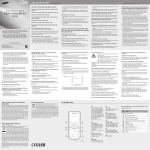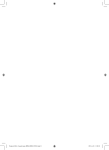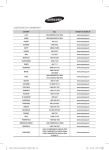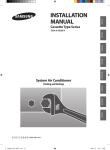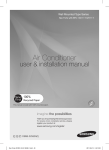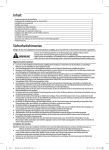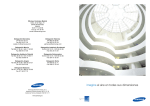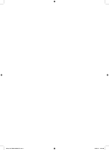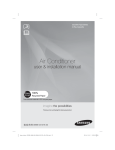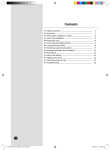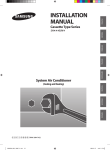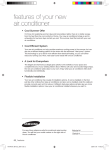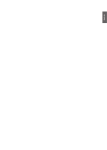Download Samsung CC24ETVA1/HAC User Manual
Transcript
Features of your new air conditioner
• Cool Summer Offer
On those hot sweltering summer days and long restless nights, there is no better escape
from the heat than the cool comforts of home. Your new air conditioner brings an end to
exhausting hot summer days and lets you rest. This summer, beat the heat with your own
air conditioner.
• A Look for Everywhere
The elegant and harmonious design gives priority to the esthetics of your space and
complements any of your existing interior décor. With its soft color and rounded-edge shape,
the new air conditioner adds class to any room. Enjoy what your air conditioner offers both
functionally and esthetically.
• Compact and easy-to-use Cassette type
Designed to be installed into most types of suspended ceiling, the cassette type air
conditioner is ideal for business and commercial accommodations. Fresh cool can be
provided through the controllable 1, 2 or 4 sides of the unit. All functions of the air
conditioner will be controlled easily via a remote control.
For easy future reference, write the model and serial
number down. You will find your model number on the
bottom right side of the air conditioner.
2
Model #
Serial #
Contents
A
USING PARTS
Safety precautions ..................................................................................................................................................... 4
Viewing your air conditioner .................................................................................................................................. 8
4 way cassette .............................................................................................................................................................................................. 8
Using your air conditioner ....................................................................................................................................... 9
Tips on using your air conditioner ...................................................................................................................................................... 9
Cleaning and maintaining the air conditioner ................................................................................................. 10
Cleaning the exterior .............................................................................................................................................................................. 10
Cleaning the grille .................................................................................................................................................................................... 11
Cleaning the filter ..................................................................................................................................................................................... 12
Maintaining your air conditioner ...................................................................................................................................................... 13
Appendix . .................................................................................................................................................................. 14
Troubleshooting . ...................................................................................................................................................................................... 14
INSTALLATION PARTS
Safety precautions.................................................................................................................................................... 16
Selecting the installation location........................................................................................................................ 18
Indoor unit installation . ......................................................................................................................................... 21
Purging the unit........................................................................................................................................................ 22
Connecting the refrigerant pipe........................................................................................................................... 23
Cutting/flaring the pipes......................................................................................................................................... 24
Performing leak test & insulation......................................................................................................................... 25
Drain pipe and drain hose installation................................................................................................................ 27
Wiring work................................................................................................................................................................ 30
Assigning address to indoor unit.......................................................................................................................... 32
Additional functions................................................................................................................................................ 33
Installing the safety net & air blocking kits........................................................................................................ 34
Final check and Providing information for user................................................................................................ 35
Troubleshooting........................................................................................................................................................ 36
3
USING PARTS
Safety precautions
A
Before using your new air conditioner, please read this manual thoroughly to ensure that you know how to
safely and efficiently operate the extensive features and functions of your new appliance.
Because the following operating instructions cover various models, the characteristics of your air conditioner
may differ slightly from those described in this manual. If you have any questions, call your nearest contact
center or find help and information online at www.samsung.com.
Important safety symbols and precautions:
WARNING
Hazards or unsafe practices that may result in severe personal injury or death.
CAUTION
Hazards or unsafe practices that may result in minor personal injury or
property damage.
Follow directions.
Do NOT attempt.
Make sure the machine is grounded to prevent electric shock.
Unplug the power plug from the wall socket.
Do NOT disassemble.
FOR INSTALLATION
WARNING
Plug the power cord into a wall socket with the power specifications of the product or higher and use the
socket for this appliance only. In addition, do not use an extension cord.
Sharing a wall socket with other appliances using a power strip or extending the power cord may result in
electric shock or fire.
Do not use an electric transformer. It may result in electric shock or fire.
If the voltage/frequency/rated current condition is different, it may cause fire.
The installation of this appliance must be performed by a qualified technician or service company.
Failing to do so may result in electric shock, fire, explosion, problems with the product, or injury.
Install a switch and circuit breaker dedicated to the air conditioner.
Failing to do so may result in electric shock or fire.
Never install the outdoor unit in a location such as on a high external wall where it could fall.
If the outdoor unit falls, it may result in injury, death or property damage.
Fix the outdoor unit firmly so that the electric part of the outdoor unit is not exposed.
Failing to do so may result in electric shock or fire.
Do not install this appliance near a heater, inflammable material. Do not install this appliance in a humid,
oily or dusty location, in a location exposed to direct sunlight and water (rain drops). Do not install this
appliance in a location where gas may leak.
This may result in electric shock or fire.
This appliance must be properly grounded. Do not ground the appliance to a gas pipe, plastic water pipe,
or telephone line.
Failure to do so may result in electric shock, fire, an explosion, or other problems with the product.
Never plug the power cord into a socket that is not grounded correctly and make sure that it is in accordance with
local and national codes.
FOR INSTALLATION
CAUTION
This appliance should be positioned in such a way that it is accessible to the power plug.
Failing to do so may result in electric shock or fire due to electric leakage.
Install your appliance on a level and hard floor that can support its weight.
Failing to do so may result in abnormal vibrations, noise, or problems with the product.
4
FOR INSTALLATION
CAUTION
Install the draining hose properly so that water is drained correctly.
Failing to do so may result in water overflowing and property damage.
When installing the outdoor unit, make sure to connect the draining hose so that draining is performed
correctly.
The water generated during the heating operation by the outdoor unit may overflow and result in property damage. In
particular, in winter, if a block of ice falls, it may result in injury, death or property damage.
FOR POWER SUPPLY
WARNING
Remove all foreign substances such as dust or water from the power plug terminals and contact points
using a dry cloth on a regular basis.
Unplug the power plug and clean it with a dry cloth.
Failing to do so may result in electric shock or fire.
Plug the power plug into the wall socket in the right direction so that the cord runs towards the floor.
If you plug the power plug into the socket in the opposite direction, the electric wires within the cable may be
damaged and this may result in electric shock or fire.
When the appliance or power plug or power cord is damaged, contact your nearest service center.
Plug the power plug into the wall socket firmly. Do not use a damaged power plug, damaged power cord
or loose wall socket.
This may result in electric shock or fire.
Do not pull the power cord, when unplugging the power plug.
Unplug the power plug by holding the plug.
Failing to do so may result in electric shock or fire.
Do not pull or excessively bend the power cord. Do not twist or tie the power cord. Do not hook the
power cord over a metal object, place a heavy object on the power cord, insert the power cord between
objects, or push the power cord into the space behind the appliance.
This may result in electric shock or fire.
FOR POWER SUPPLY
CAUTION
When not using the air conditioner for a long period of time or during a thunder/lightning storm, cut the
power at the circuit breaker.
Failing to do so may result in electric shock or fire.
FOR USING
WARNING
If the appliance is flooded, please contact your nearest service center.
Failing to do so may result in electric shock or fire.
If the appliance generates a strange noise, a burning smell or smoke, unplug the power plug immediately
and contact your nearest service center.
Failing to do so may result in electric shock or fire.
In the event of a gas leak (such as propane gas, LP gas, etc.), ventilate immediately without touching the
power plug. Do not touch the appliance or power cord.
Do not use a ventilating fan.
A spark may result in an explosion or fire.
To reinstall the air conditioner, please contact your nearest service center.
Failing to do so may result in problems with the product, water leakage, electric shock, or fire.
A delivery service for the product is not provided. If you reinstall the product in another location, additional
construction expenses and an installation fee will be charged.
Especially, when you wish to install the product in an unusual location such as in an industrial area or near the seaside
where it is exposed to the salt in the air, please contact your nearest service center.
5
A
Safety
precautions
FOR USING
WARNING
Do not touch the power plug or the circuit breaker with wet hands.
This may result in electric shock.
Do not unplug the power plug or turn the air conditioner off with the circuit breaker while it is operating.
Plugging the power plug into the wall outlet or turning the air conditioner on from the circuit breaker may cause a
spark and result in electric shock or fire.
After unpacking the air conditioner, keep all packaging materials well out of the reach of children, as
packaging materials can be dangerous to children.
If a child places a bag over its head, it may result in suffocation.
Do not insert your fingers or foreign substances into the air inlet/outlet of the air conditioner.
Take special care that children do not injure themselves by inserting their fingers into the product.
Do not strike or pull the air conditioner with excessive force.
This may result in fire, injury, or problems with the product.
Do not place an object near the outdoor unit that allows children to climb onto the machine.
This may result in children seriously injuring themselves.
Do not use this air conditioner for long periods of time in badly ventilated locations or near infirm people.
Since this may be dangerous due to a lack of oxygen, Open a window at least once an hour.
If any foreign substance such as water has entered the appliance, cut the power by unplugging the power
plug and turning the circuit breaker off and then contact your nearest service center.
Failing to do so may result in electric shock or fire.
Do not attempt to repair, disassemble, or modify the appliance yourself.
Do not use any fuse (such as cooper, steel wire, etc.)other than the standard fuse.
Failing to do so may result in electric shock, fire, problems with the product, or injury.
FOR USING
CAUTION
Do not place objects or devices under the indoor unit.
Water dripping from the indoor unit may result in fire or property damage.
Check that the installation frame of the outdoor unit is not broken at least once a year.
Failing to do so may result in injury, death or property damage.
Max current is measured according to IEC standard for safety and current is measured according to ISO
standard for energy efficiency.
Do not stand on top of the appliance or place objects (such as laundry, lighted candles, lighted cigarettes,
dishes, chemicals, metal objects, etc.) on the appliance.
This may result in electric shock, fire, problems with the product, or injury.
Do not operate the appliance with wet hands.
This may result in electric shock.
Do not spray volatile material such as insecticide onto the surface of the appliance.
As well as being harmful to humans, it may also result in electric shock, fire or problems with the product.
Do not drink the water from the air conditioner.
The water may be harmful to humans.
Do not apply a strong impact to the remote controller and do not disassemble the remote controller.
Do not touch the pipes connected with the product.
This may result in burns or injury.
6
FOR USING
CAUTION
Do not use this air conditioner to preserve precision equipment, food, animals, plants or cosmetics, or for
any other unusual purposes.
This may result in property damage.
Avoid directly exposing humans, animals or plants from the air flow from the air conditioner for long
periods of time.
This may result in harm to humans, animals or plants.
This appliance is not intended for use by persons (including children) with reduced physical, sensory or
mental capabilities, or lack of experience and knowledge, unless they have been given supervision or
instruction concerning use of the appliance by a person responsible for their safety. Children should be
supervised to ensure that they do not play with the appliance.
FOR CLEANING
WARNING
Do not clean the appliance by spraying water directly onto it. Do not use benzene, thinner or alcohol to
clean the appliance.
This may result in discoloration, deformation, damage, electric shock or fire.
Before cleaning or performing maintenance, unplug the air conditioner from the wall socket and wait
until the fan stops.
Failing to do so may result in electric shock or fire.
FOR CLEANING
CAUTION
Take care when cleaning the surface of the heat exchanger of the outdoor unit since it has sharp edges.
To avoid cutting your fingers, wear thick cotton gloves when cleaning it.
Do not clean the inside of the air conditioner by yourself.
For cleaning inside the appliance, contact your nearest service center.
When cleaning the internal filter, refer to the descriptions in the ‘Cleaning the air conditioner’ section.
Failure to do may result in damage, electric shock or fire.
7
Viewing your air conditioner
Congratulations on the purchase of the air conditioner. We hope you enjoy the features of your air
conditioner and stay cool with optimal efficiency.
Please read the user manual to get started and to make the best use of the air conditioner.
4 way cassette
Main parts
Air flow blade
Air intake
Air filter (under the grille)
Display
Display
Filter reset indicator
Fan indicator
Timer indicator
Removing frost indicator
Power indicator
Remote control sensor
Power button
Your air conditioner may slightly look different from illustration shown above depending on
your model.
8
Using your air conditioner
TIPS ON USING AIR CONDITIONER
Here are some tips that you would follow when using your air conditioner.
TOPIC
RECOMMENDATION
Cooling
• If current outside temperatures are much higher than the selected indoor
temperature, it may take time to bring the inner temperature to the desired
coolness.
• Avoid drastically turning down the temperature. Energy is wasted and the
room does not cool faster.
Power failure
• If a power failure occurs during the operation of the air conditioner, the
operating immediately stops and unit will be off. When power returns, the
air conditioner will run automatically.
Protection
mechanism
• If the air conditioner has just been turned on after operation stops or being
plugged in, cool/warm air does not come out for 3 minutes to protect the
compressor of the outdoor unit.
9
Cleaning and maintaining the air conditioner
For the best performance from your air conditioner, clean it periodically. When cleaning, make sure to
unplug from the unit for user’s safety.
CLEANING THE EXTERIOR
• When cleaning the exterior, make sure to unplug the
power from the unit.
No special tools are needed to clean it.
• Wipe the surface of the unit with a slightly wet or dry
cloth when needed. Wipe off dirt of odd-shaped area
by using a soft brush.
CAUTION
10
Do not use Benzene or Thinner.
They may damage the surface of the air conditioner and can create a risk of fire.
CLEANING THE GRILLE
When cleaning the grille, make sure to unplug the power from the
unit. No special tools are needed to clean it.
1. Open the front grille.
Push both of the tabs outwards to unlock the hook
on the front grille. The grille automatically drops.
Two safety clips are mounted to the inside front
grille to prevent dropping downward.
2. Unhook the safety clips by holding the front grille.
3. Detach the front grille.
Hold the front grille at a 45° angle, lift it up slightly and then pull the grille forward.
CAUTION
Hold the grille to prevent dropping outside from the opening of the front grille. If not, it may
cause a potential risk of personal injury.
Cleaning the grille is also available while being attached to the panel.
4. Pull out the Air filter.
Grab the Air filter and lift it upwards while pushing slightly, and then pull the Air filter forward.
5. Clean the grille with a vacuum cleaner or soft brush. If dust is too heavy, then rinse it with
running water and dry it in a ventilated area.
6. Insert the Air filter back in its original position.
You will hear a click sound when the Air filter is properly placed.
7. Reattach the front grille.
Place the hook on the unit to the right place then push the front grille upward. Mount the
safety clips to its original position.
The illustration shown above may differ from yours depending on your model.
11
Cleaning and maintaining the air conditioner
CLEANING THE FILTER
When cleaning the filter, make sure to unplug the power from the unit. Washable foam based Air filter
captures large particles from the air. The filter is cleaned with a vacuum or by hand washing.
1. Push both of the tabs outwards to unlock the hook
on the front grille.
The grille automatically drops. Two safety clips
are mounted to the inside front grille to prevent
dropping downward.
2. Pull out the Air filter.
Grab the Air filter and lift it upwards
while pushing slightly, and then pull
the Air filter forward.
When cleaning the filter you do
not need to detach the grille at all
times. If you want to detach the
front grille, see step 2 and 3 on
page 16 for instructions.
3. Clean the Air filter with a vacuum cleaner or soft brush. If dust is too heavy, then rinse it with
running water and dry it in a ventilated area.
• For best conditions, repeat every two weeks.
• If the Air filter dries in a confined (or humid) area, odors may generate. If it occurs,
re-clean and dry it in a well-ventilated area.
4. Insert the Air filter back in its original position.
You will hear a click sound when the Air filter is properly placed.
5. Close the front grille by pushing it upward.
• The illustration shown above may differ from yours depending on your model.
• After cleaning the filter, press the Filter Reset button on the remote control for 2 seconds
to reset the filler schedule. Filter sign indicator will be on for cleaning time.
12
MAINTAINING YOUR AIR CONDITIONER
If the air conditioner will not be used for an extended period of time, dry the air conditioner to maintain it
in best condition.
1. Dry the air conditioner thoroughly by operating in Fan mode for 3 to 4 hours and disconnect
the power plug. There may be internal damage if moisture is left in components.
2. Before using the air conditioner again, dry the inner components of the air conditioner again by
running in Fan mode for 3 to 4 hours. This helps remove odors which may have generated from
dampness.
Periodical checks
Refer to the following chart to maintain the air conditioner properly.
Type
Description
Clean the air filter (1)
Indoor
unit
Monthly
Every 4
months
Clean the condensate drain pan (2)
Thoroughly clean the heat exchanger (2)
Clean the condensate drain pipe (2)
Replace the remote control batteries (1)
Clean the heat exchanger on the outside of the
unit (2)
Outdoor
unit
Once a
year
Clean the heat exchanger on the inside of
the unit (2)
Clean the electric components with jets of
air (2)
Verify that all the electric components are firmly
tightened (2)
Clean the fan (2)
Verify that all the fan assembly is firmly
tightened (2)
Clean the condensate drain pan (2)
The checks and maintenance operations described are essential to guarantee the
efficiency of the air conditioner. The frequency of these operations varies according to the
characteristics of the area, the amount of dust, etc.
(1) The described operations should be performed more frequently if the area of
installation is very dusty.
(2) These operations must always be performed by qualified personnel. For more detailed
information, see the Installation Manual.
13
Cleaning and maintaining the air conditioner
MAINTAINING YOUR AIR CONDITIONER
Internal protections via the unit control system
This internal protection operates if an internal fault occurs in the air conditioner.
Type
Anti-protection of
internal battery
Protect
compressor
Description
The compressor will be off to protect internal battery when the air conditioner
operates in Cool mode.
The air conditioner does not start operating immediately to protect the
compressor of the outdoor unit after it has been started.
Appendix
OPERATION RANGES
The table below indicates the temperature and humidity ranges the air conditioner can be operated
within. Refer to the table for efficient use.
MODE
OPERATIONAL TEMPERATURE
INDOOR
OUTDOOR
INDOOR
HUMIDITY
IF OUT OF CONDITIONS
Condensation may occur on the
indoor unit with risk to have either
water blow off or drops on the
floor.
Condensation may occur on the
indoor unit with risk to have either
water blow off or drops on the
floor.
COOLING
21˚C to 32˚C
21˚C to 54˚C
80%
or less
DRYING
21˚C to 32˚C
21˚C to 54˚C
-
If the cooling operation is used at over 32˚C (indoor temperature), it does not cool at its full capacity.
14
Appendix
TROUBLESHOOTING
Refer to the following chart if the air conditioner operates abnormally. This may save time and
unnecessary expenses.
PROBLEM
SOLUTION
The air conditioner does not operate • Because of the protective mechanism, the appliance does not start operating immediately
to keep the unit from overloading.
immediately after it has been
The air conditioner will start in 3 minutes.
restarted.
The air conditioner does not work
at all.
• Check that the power plug is properly connected. Insert the power plug into the wall
socket correctly.
• Check if the circuit breaker is switched off.
• Check if there is a power failure.
• Check your fuse. Make sure it is not blown out.
The temperature does not change.
• Check if you selected Fan mode.
Press the Mode button on the remote control to select another mode.
The cool air does not come out of
the air conditioner.
• Check if the set temperature is higher (lower) than the current temperature. Press the
Temperature button on the remote control to change the set temperature. Press the
Temperature button to decrease or increase the temperature.
• Check if the air filter is blocked by dirt.
• Check if the air conditioner has just been turned on. If so, wait 3 minutes. Cool air does not
come out to protect the compressor of the outdoor unit.
• Check if the air conditioner is installed in a place with a direct exposure to sunlight. Hang
curtains on windows to boost cooling efficiency.
• Check if the cover or any obstacle is not near the outdoor unit.
• Check if the refrigerant pipe is too long.
The fan speed does not change.
• Check if you selected Auto or Dry mode.
The air conditioner automatically adjusts the fan speed to Auto in Auto/Dry mode.
Timer function does not set.
• Check if you press the Power button on the remote control after you have set the time.
Odors permeate in the room during
operation.
• Check if the appliance is running in a smoky area or if there is a smell entering from
outside. Operate the air conditioner in Fan mode or open the windows to air out the
room.
The air conditioner makes a
bubbling sound.
• A bubbling sound may be heard when the refrigerant is circulating through the
compressor. Let the air conditioner operate in a selected mode.
• When you press the Power button on the remote control, noise may be heard from the
drain pump inside the air conditioner.
Water is dripping from the air flow
blades.
• Check if the air conditioner has been cooling for an extended period of time with the air
flow blades pointed downwards. Condensation may generate due to the difference in
temperature.
Remote control is not working.
•
•
•
•
The air conditioner does not turn on
or off with the wired remote control.
• Check if you set the wired remote control for group control.
The wired remote control does not
operate.
• Check if TEST indicator is displayed on the wired remote control.
If so, turn off the unit and switch off the circuit breaker. Call your nearest contact center.
The indicators of the digital display
flashes.
• Press the Power button on the remote control to turn the unit off and switch the circuit
breaker off. Then, switch it on again.
Check if your batteries are depleted.
Make sure batteries are correctly installed.
Make sure nothing is blocking your remote control sensor.
Check that there are strong lighting apparatus near the air conditioner. Strong light which
comes from fluorescent bulbs or neon signs may interrupt the electric waves.
15
INSTALLATION PARTS
Safety precautions
(Carefully follow the precautions listed below because they are essential to guarantee the safety of the
equipment.)
WARNING
• Always disconnect the air conditioner from the power supply before servicing it or
accessing its internal components.
• Verify that installation and testing operations are performed by qualified personnel.
• Verify that the air conditioner is not installed in an easily accessible area.
General information
Carefully read the content of this manual before installing the air conditioner and store the manual in a safe place in
order to be able to use it as reference after installation.
For maximum safety, installers should always carefully read the following warnings.
Store the operation and installation manual in a safe location and remember to hand it over to the new owner if the
air conditioner is sold or transferred.
This manual explains how to install an indoor unit with a split system with two SAMSUNG units. The use of other types
of units with different control systems may damage the units and invalidate the warranty. The manufacturer shall not
be responsible for damages arising from the use of non compliant units.
The manufacturer shall not be responsible for damage originating from unauthorized changes or the improper
connection of electric and requirements set forth in the “Operating limits” table, included in the manual, shall
immediately invalidate the warranty.
The air conditioner should be used only for the applications for which it has been designed: the indoor unit is not
suitable to be installed in areas used for laundry.
Do not use the units if damaged. If problems occur, switch the unit off and disconnect it from the power supply.
In order to prevent electric shocks, fires or injuries, always stop the unit, disable the protection switch and contact
SAMSUNG’s technical support if the unit produces smoke, if the power cable is hot or damaged or if the unit is very
noisy.
Always remember to inspect the unit, electric connections, refrigerant tubes and protections regularly.
These operations should be performed by qualified personnel only.
The unit contains moving parts, which should always be kept out of the reach of children.
Do not attempt to repair, move, alter or reinstall the unit. If performed by unauthorized personnel, these operations
may cause electric shocks or fires.
Do not place containers with liquids or other objects on the unit.
All the materials used for the manufacture and packaging of the air conditioner are recyclable.
The packing material and exhaust batteries of the remote control(optional) must be disposed of in accordance with
current laws.
The air conditioner contains a refrigerant that has to be disposed of as special waste. At the end of its life cycle, the air
conditioner must be disposed of in authorized centers or returned to the retailer so that it can be disposed of correctly
and safely.
Installing the unit
IMPORTANT: When installing the unit, always remember to connect first the refrigerant tubes, then the electrical lines.
Always disassemble the electric lines before the refrigerant tubes.
Upon receipt, inspect the product to verify that it has not been damaged during transport. If the product appears dam
aged, DO NOT INSTALL it and immediately report the damage to the carrier or retailer (if the installer or the authorized
technician has collected the material from the retailer.)
After completing the installation, always carry out a functional test and provide the instructions on how to operate
the air conditioner to the user.
Do not use the air conditioner in environments with hazardous substances or close to equipment that release free
flames to avoid the occurrence of fires, explosions or injuries.
16
Power supply line, fuse or circuit breaker
Always make sure that the power supply is compliant with current safety standards. Always install the air conditioner in
compliance with current local safety standards.
Always verify that a suitable grounding connection is available.
Verify that the voltage and frequency of the power supply comply with the specifications and that the installed power is
sufficient to ensure the operation of any other domestic appliance connected to the same electric lines.
Always verify that the cut-off and protection switches are suitably dimensioned.
Verify that the air conditioner is connected to the power supply in accordance with the instructions provided in the
wiring diagram included in the manual.
Always verify that electric connections (cable entry, section of leads, protections…) are compliant with the electric
specifications and with the instructions provided in the wiring scheme. Always verify that all connections comply with
the standards applicable to the installation of air conditioners.
17
Selecting the installation location
A
When deciding on the location of the air conditioner with the owner, the following restrictions must be taken into account.
General
Do NOT install the air conditioner in a location where it will come into contact with the following
elements:
Combustible gases
Saline air
Machine oil
Sulphide gas
Special environmental conditions
If you must install the unit in such conditions, first consult your dealer.
Avoid installing the air conditioner:
In
areas where it is exposed to direct sunlight. Close to heat sources.
In damp areas or locations where it could come into contact with water.
(for example rooms used for laundry)
In areas where curtains and furniture could affect the supply and discharge of air.
Without leaving the required minimum space around the unit. (as shown in the drawing)
In scarcely ventilated areas.
On surfaces that are unable to support the weight of the unit without deforming, breaking or causing
vibrations during the use of the air conditioner.
In a position that does not enable the condensate drainage pipe to be correctly installed.
(at the end of the installation. It is always essential to check the efficiency of the drainage system)
Accessories
The following accessories are supplied with the indoor unit.
The type and quantity may differ depending on the specifications.
Pattern sheet
Insulation cover
drain
Insulation
Insulation cover
band
Insulation pipe
Safety net
Insulation drain
hose
Cable-tie
Flexible hose
M4x12
tapped screw
Pad stopper
User&Installation
manual
Indoor unit
18
There must be no obstacles near the air inlet and outlet.
Install the indoor unit on a ceiling that can support its weight.
Maintain sufficient clearance around the indoor unit.
Make sure that the water dripping from the drain hose runs away correctly and safely.
The indoor unit must be installed in this way, that they are out of public access(Not touchable by the users).
Rigid wall without vibration.
Where it is not exposed to direct sunshine.
Where the air filter can be removed and cleaned easily.
Space requirements for indoor unit
CAUTION
Our units must be installed in compliance with the spaces indicated in the installation manual to ensure either
accessibility from both sides or ability to perform routine maintenance and repairs. The units’ components must
be accessible and that can be disassembled in conditions of complete safety either for people or things.
As a rule, the unit cannot be installed at a height of less than 2.5 m.
It is possible to install the unit at a height of between 2.2~2.5m from the ground, if the unit has a
duct with a well defined length (300mm or more) to avoid fan motor blower contact.
If you install the cassette or duct type indoor unit on the ceiling with humidity over 80%, you must apply extra
10mm of polyethylene foam or other insulation with similar material on the body of the indoor unit.
Insulation Guide
D
A
B
E
C
Thickness: more than 10mm
Indoor Unit
A
B
C
D
4Way-Cst S 840x218x840
980x160
980x160
550x160
550x160
Insulate the end of the pipe and some curved area by using separate insulator.
E
870x870
19
Selecting the installation location
Unit : mm
860~890 (Ceiling opening)
950
766(Suspension)
950
57
550
Adjustable
25
208
100
80
230
160
190
260
290
No.
1
2
3
4
5
6
242
246
305
Name
Liquid pipe connection
Gas pipe connection
Drain pipe connection
Drain supply connection
Air discharge grille
Air suction grille
Branch duct
connection
Description
ø6.35(1/4")
ø15.88(5/8")
OD 32, ID 26
-
2500mm
or more
Required
space
64
218
166
716
41
322
20
57
840
25
860~890(Ceiling opening)
699(Suspension position)
Indoor unit installation
It is recommended to install the refnet joint before
installing the indoor unit.
1
Place the pattern sheet on the ceiling at the spot where
you want to install the indoor unit.
NoteSince the diagram is made of paper, it may
shrink or stretch slightly due to temperature
or humidity. For this reason, before drilling
the holes maintain the correct dimensions
between the markings.
2
Insert bolt anchors, use existing ceiling supports or
construct a suitable support as shown in figure.
3
Install the suspension bolts depending on the ceiling type.
Concrete
Insert
CAUTION
4
Ensure that the ceiling is strong enough
to support the weight of the indoor unit.
Before hanging the unit, test the strength
of each attached suspension bolt.
Hole in anchor
Hole in plug
Suspension bolt(M8)-field supply
If the length of suspension bolt is more
than 1.5m, it is required to prevent
vibration.
Ceiling support
Screw eight nuts to the suspension bolts making space for
hanging the indoor unit.
CAUTIONYou must install all the suspension rods.
5
Hang the indoor unit to the suspension bolts between
two nuts.
NotePiping must be laid and connected inside
the ceiling when suspending the unit. If the
ceiling is already constructed, lay the piping
into position for connection to the unit
before placing the unit inside the ceiling.
6
Screw the nuts to suspend the unit. Cut a pad stopper and
place it on the bracket at this time.
7
Adjust the unit to the appropriate position considering the
installation area for the front panel.
7-1 Place the pattern sheet on the indoor unit.
7-2 Adjust a space between the ceiling and the indoor unit by
using the gauge of dimensions.
7-3 Fix the indoor unit securely after adjusting level of the unit
by using a leveler.
7-4 Remove the pattern sheet, connect the other cables and
install the front panel.
Pad stopper
Bracket
Indoor unit
17mm
20mm
Ceiling
Gauge of
Dimensions
21
Purging the unit
From factory the unit is supplied and set with a pre-charge
of nitrogen gas. (insert gas) Therefore, all insert gas must
be purged before connecting the assembly piping.
Unscrew the pinch pipe at the end of each refrigerant pipe.
Result:
All inert gas escapes from the indoor unit.
NoteTo prevent dirt or foreign objects from getting
into the pipes during installation, do NOT remove
the pinch pipe completely until you are ready to
connect the piping.
Liquid refrigerant
port
Gas refrigerant port
22
Connecting the refrigerant pipe
There are two refrigerant pipes of different diameters:
A smaller one for the liquid refrigerant
A larger one for the gas refrigerant
The inside of copper pipe must be clean & has
no dust.
1
Remove the pinch pipe on the pipes and connect the
assembly pipes to each pipe, tightening the nuts, first
manually and then with a torque wrench, a spanner
applying the following torque.
Outer Diameter
6.35 mm (1/4”)
9.52 mm (3/8”)
12.70 mm (1/2”)
15.88 mm (5/8”)
19.05 mm (3/4”)
Note
Refrigerant oil
Torque (kgf•cm)
145~175
333~407
505~615
630~769
990~1210
If the pipes must be shortened refer to page
24.
2
Must use insulator which is thick enough to cover the
refrigerant tube to protect the condensate water on the
outside of pipe falling onto the floor and the efficiency of
the unit will be better.
3
Cut off any excess foam insulation.
4
Be sure that there must be no crack or wave on the
bended area.
5
It would be necessary to double the insulation
thickness(10mm or more) to prevent condensation even
on the insulator when if the installed area is warm and
humid.
6
Do not use joints or extensions for the pipes that
connect the indoor and outdoor unit. The only permitted
connections are those for which the units are designed.
Torque wrench
Spanner
Flare nut
Union
CAUTION
onnect the indoor and outdoor units using pipes with flared connections(not supplied). For the
C
lines, use insulated, unwelded, degreased and deoxidized copper pipe,(Cu DHP type to ISO 1337),
suitable for operating pressures of at least 4200kPa and for a burst pressure of at least 20700kPa.
Copper pipe for hydro-sanitary applications is completely unsuitable.
For sizing and limits (height difference, line length, max. bends, refrigerant charge, etc.) see the
outdoor unit installation manual.
All refrigerant connection must be accessible, in order to permit either unit maintenance or
removing it completely.
23
Cutting/flaring the pipes
1
Make sure that you prepared the required tools.
(pipe cutter, reamer, flaring tool and pipe holder)
2
If you want to shorten the pipe, cut it using a pipe cutter ensuring that
the cut edge remains at 90° with the side of the pipe. There are some
examples of correctly and incorrectly cut edges below.
Oblique
Rough
Burr
3
To prevent a gas leak, remove all burrs at the cut edge of the pipe using a
reamer.
4
Slide a flare nut on to the pipe and modify the flare.
5
Outer diameter (D)
Depth (A)
6.35 mm (1/4”)
9.52 mm (3/8”)
12.70 mm (1/2”)
15.88 mm (5/8”)
19.05 mm (3/4”)
1.3mm
1.8mm
2.0mm
2.2mm
2.2mm
Check if you flared the pipe correctly. There are some examples of
incorrectly flared pipes below.
Inclined
6
Damaged Surface Cracked
Uneven Thickness
Align the pipes and tighten the flare nuts first manually and then with a
torque wrench, applying the following torque.
Valve
Flare nut
Valve cap
Pressure port cap
Wrench(mm) N•m Wrench(mm) N•m Wrench(mm)
N•m
Pressure port
1/4"
17
18
23
20
18
16~18 Allen(hex.) 5
9
-
0.34
3/8"
22
42
23
20
18
16~18 Allen(hex.) 5
9
-
0.34
1/2"
26
55
29
40
18
16~18 Allen(hex.) 5
13
-
0.34
5/8"
29
65
29
40
18
16~18 Allen(hex.) 5
13
-
0.34
3/4"
36
100
38
40
18
16~18 Allen(hex.) 5
13
-
0.34
CAUTION
In case of needing brazing, you must work with Nitrogen gas blowing.
24
Valve needle
Wrench(mm) N•m Wrench(mm) N•m
Performing leak test & insulation
Leak test
LEAK TEST WITH NITROGEN (before opening valves)
In order to detect basic refrigerant leaks, before recreating
the vacuum and recirculating the R22, it’s responsable of
installer to pressurize the whole system with nitrogen (using
a cylinder with pressure reducer) at a pressure above 30 bar
(gauge).
LEAK TEST WITH R22 (after opening valves)
Before opening valves, discharge all the nitrogen into the
system and create vacuum. After opening valves check leaks
using a leak detector for refrigerant R22.
CAUTION
Discharge all the nitrogen to create a vacuum and
charge the system.
Insulation
Once you have checked that there are no leaks in the system,
you can insulate the piping and hose.
1
To avoid condensation problems, place T13.0 or thicker
Acrylonitrile Butadien Rubber separately around each
refrigerant pipe.
No gap
NoteAlways make the seam of pipes face upwards.
NBR(T13.0 or thicker)
2
Wind insulating tape around the pipes and drain hose
avoiding to compress the insulation too much.
Insulation cover pipe
Insulation pipe
3
4
Finish wrapping insulating tape around the rest of the
pipes leading to the outdoor unit.
The pipes and electrical cables connecting the indoor
unit with the outdoor unit must be fixed to the wall with
suitable ducts.
Indoor unit
Be sure to overlap
the insulation
CAUTION
CAUTION
All refrigerant connection must be accessible, in order
to permit either unit maintenance or removing it
completely.
Must fit tightly against body
without any gap.
25
Performing leak test & insulation
5 Select the insulator of the refrigerant pipe.
Insulate the gas side and liquid side pipe referring to the thickness according to the pipe size.
Indoor temperature of 30°C and humidity of 85% is the standard condition. If installing in a high
humidity condition, use one grade thicker insulator by referring to the table below.
If installing in an unfavorable conditions, use thicker one.
Insulator’s heat-resistance temperature should be more than 120°C.
Pipe
Pipe size
Liquid
pipe
Ø6.35 ~ Ø9.52
Ø12.7 ~ Ø50.80
Ø6.35
Ø9.52
Ø12.70
Ø15.88
Ø19.05
Ø22.23
Ø25.40
Ø28.58
Ø31.75
Ø38.10
Ø44.45
Ø50.80
Gas
pipe
Insulation Type (Heating/Cooling)
Standard
High humidity
[30°C, 85%]
[30°C, over 85%]
EPDM, NBR
9t
13t
13t
19t
25t
19t
Remarks
Internal temperature
is higher than 120°C
32t
25t
Refrigerant pipe
You can contact the gas side and liquid side pipes but the
pipes should not be pressed.
When contacting the gas side and gas side pipe, use 1 grade
thicker insulator.
38t
Insulation
Insulation
Liquid pipe
Gas pipe
CAUTION
Install the insulation not to get wider and use the adhesives on the connection part of it to prevent
moisture from entering.
Wind the refrigerant pipe with insulation tape if it is exposed to outside sunlight.
Install the refrigerant pipe respecting that the insulation does not get thinner on the bent part or
hanger of pipe.
Add the additional insulation if the insulation plate gets thinner.
Hanger
Additional insulation
a
a×3
26
Refrigerant pipe insulation
Drainpipe and drain hose installation
A
Care must be taken when installing the drainpipe and
drain hose for the indoor unit so that condensate water is
drained correctly outside.
1
Fix the flexible hose to the drainpipe.
The connection port of the flexible hose and PVC
drainpipe must be fixed with PVC adhesives.
Check out that the connected part doesn’t leak.
2
Connect the flexible hose to the flexible hose port.
Make sure that a rubber ring is installed on the drain
hose port.
3
Install the drainpipe as shortly as possible.
Give a slightly slant to the drainpipe for proper drainage
of condensate water.
There must be no gap on the connected part so that
the drainpipe is not separated from the flexible hose.
4
Insulate the drainpipe, and then fix it as indicated.
Flexible hose
Drain pipe
Drain hose port
Insulation cover band
Insulation drainpipe
Insulation cover drain
Indoor
unit
Band(Not supplied)
Drain
hose
port
Flexible
hose
Band
Adhesives
Band
Drain hose
27
Drainpipe and drain hose installation
Drainpipe Connection
Flexible hose Installation
Be horizontal
1
The drain pipe should be installed within 100mm from the
flexible hose, lift up from 100mm to 550mm and lift down
20mm or more.
2
Install horizontal drainpipe with a slope of 1/100 or more
and fix it by hanger space of 1~1.5m.
Indoor
Unit
Install the air vent in the horizontal drainpipe to prevent
water flow back to the indoor unit.
Install horizontally
3
Note
4
5
Flexible hose
ou may not need to install it if there were
Y
proper slope in the horizontal drainpipe.
The flexible hose should not be installed upward position,
it may cause water flow back to the indoor unit.
Install U-trap at the end of the drainpipe to prevent a nasty
smell to reach the indoor unit.
Air vent
300mm or less
Flexible hose
Max. 20mm
Max. allowable axis gap
Indoor
Unit
1~1.5m
100mm
or more
Indoor
Unit
Max. 30˚
Hanger
Max. allowable bending angle
100~550mm
or less
Insulation
Horizontal drainpipe
more than 1/100 slope
Ceiling
Connect to
indoor unit
Insulation
Flexible hose
(Apply adhesive on
the outside)
Connect to
PVC drain
pipe
PVC
drain pipe
(Apply
adhesive on
the inside)
Handle with using adhesive not to block the inside
of flexible hose
28
Testing the drainage
You should test the drainage after completing the
installation. Prepare a little water about 2.0 liters.
1
Turn the cover drain pump, then pull it out.
2
Pour water into the indoor unit as shown in figure.
NoteIf you do not pour water inside the water
supply intake, water may spill from the indoor
unit.
3
Cover drain pump
Confirm that the water flows out through the drain hose.
NoteYou can check the drainage only when the air
conditioner is in cool mode.
4
Reassemble the cover drain pump.
29
Wiring work
A
Power and communication cable connection
1
Before wiring work, you must turn off all power source.
2
Indoor unit power should be supplied through the breaker( ELCB or MCCB+ELB ) separated by the
outdoor power.
ELCB: Earth Leakage Circuit Breaker
MCCB:Molded Case Circuit Breaker
ELB:Earth Leakage Breaker
3
The power cable should be used only copper wires.
4
Connect the power cable{1(L), 2(N)} among the units within maximum length and communication
cable 3(C) each.
5
Connect V1, V2(for DC12V) and F3, F4(for communication) when installing the wired remote controller.
WARNING
Power off before connecting any wires;
Indoor PBA will be damaged while V1,V2,F3,F4 short each other.
Indoor unit
1(L) 2(N)
3(C)
F1
F2
V1
V1
F3
F4
Wired
Remote
controller
Main Power
Outdoor unit
220-240V~,50Hz
3(C)
Between Indoor and Outdoor Connection Cord Specifications
Power Supply (Single Phase)
Power Supply
Max/Min(V) Connection Wire
220-240V~,50Hz
±10%
Earth Cable
1.25mm2,2 wires Ø 1.6mm,1 wire
Communication
Cable
Home server
0.75~1.25mm2
1 wire
0.75~1.25mm2
2 wires
kThe terminal block designs and shape are subject to change according to the model.
k Screws on terminal block must not be unscrewed with the torque less than 12 kgf•cm.
30
Selecting compressed ring terminal
Silver solder
B
D
d1
E
F
L
d2
t
Norminal Norminal
Standard
Standard
Standard
dimensions dimensions Standard
Allowance
Allowance
Allowance
Allowance
dimension
dimension
Min. Min. Max. dimension
Min.
for cable for screw dimension
(mm)
(mm)
(mm)
(mm)
(mm)
(mm)
(mm)
(mm)
(mm)
(mm2)
4
6.6
+0.3
+0.2
1.5
±0.2
3.4
1.7
±0.2
4.1
6
16
4.3
0.7
4
8
-0.2
0
4
6.6
+0.3
+0.2
2.5
±0.2
4.2
2.3
±0.2
6
6 17.5
4.3
0.8
4
8.5
-0.2
0
+0.3
+0.2
4
4
9.5
±0.2
5.6
3.4
±0.2
6
5
20
4.3
0.9
-0.2
0
CAUTION
Select the power cable in accordance with relevant local and national regulations.
Wire size must comply with local and national code.
For the power cable, use the grade of H07RN-F or H05RN-F materials.
You should connect the power cable into the power cable terminal and fasten it with a clamp.
The unbalanced power must be maintained within 10% of supply rating among whole indoor
units.
If the power is unbalanced greatly, it may shorten the life of the condenser. If the unbalanced
power is exceeded over 10% of supply rating, the indoor unit is protected, stopped and the error
mode indicates.
To protect the product from water and possible shock, you should keep the power cable and the
connection cord of the indoor and outdoor units in the iron pipe.
Connect the power cable to the auxiliary circuit breaker.
An all pole disconnection from the power supply must be incorporated in the fixed wiring(≥3mm).
You must keep the cable in a protection tube.
Keep distances of 50mm or more between power cable and communication cable.
Maximum length of power cables are decided within 10% of power drop. If it exceeds, you must
consider another power supplying method.
The circuit breaker(ELCB or MCCB+ELB) should be considered more capacity if many indoor units
are connected from one breaker.
Use round pressure terminal for connections to the power terminal block.
For wiring, use the designated power cable and connect it firmly, then secure to prevent outside
pressure being exerted on the terminal board.
Use an appropriate screwdriver for tightening the terminal screws. A screwdriver with a small
head will strip the head and make proper tightening impossible.
Over-tightening the terminal screws may break them.
See the table below for tightening torque for the terminal screws.
Tightening torque(kgf•cm)
M3
5.9
M4
12.0~14.7
31
Assigning
address to indoor unit
A
1
Before installing the indoor unit, assign an address to the indoor unit according to the air conditioning
system plan.
2
The address of the indoor unit is assigned by adjusting MAIN(SW02) and RMC(SW04) rotary switches.
MAIN
RMC
The designs and shape are
subject to change according
to the model.
Setting Main Address
The MAIN address is for communication between the indoor unit and the outdoor unit.
Therefore, you must set it to operate the air conditioner properly.
You can set the MAIN address from ‘0’ to ‘F’ by SW02.
The MAIN address from ‘0 to ‘F’ should differ from each other.
Check the indoor unit address on the plan that you may install and set the address according to the
plan.
Note
You may not need to set main address if you selected Auto Address Setting from the
outdoor unit: see details on the outdoor unit installation manual.
For Example
When MAIN address is set as "2".
Setting RMC Address
The SW04 RMC switch is the address setting switch for controlling the indoor unit with the centralized controller.
You must set the SW04 and K2 switch when using the centralized controller.
For Example
32
When RMC address is set as "2".
Additional functions
No.
SW05
ON
OFF
K1
Wired remocon
Not use
Use
K2
Centralized controller
Not use
Use
K3
RPM
Default
1 Set up
K4
Drain Pump
Not use
Use
SW05
Function
ON
OFF
K5 K6 K7 K8
K5
-
-
-
K6
Filter Time
1,000 hours
2,000 hours
K7
-
-
-
K8
-
-
-
Function
ON
OFF
K9
-
-
-
K10
-
-
-
K11
External control
Not use
Use
K12
-
-
-
No.
SW06
No.
SW07
K1 K2 K3 K4
Function
SW06
K9 K10 K11 K12
SW07
33
Installing the safety net & air blocking kits
Safety net
Install the safety net after installing the connection cord
and fixing electric component box cover. For your safety,
you must install the safety net. For details about installing
the panel, refer to the manual for the panel.
1
Uncover the wrap of safety net.
2
Fix the safety net to the electric component cover box
with four screws as indicated.
CAUTION
The maintenance of this unit is normally done by qualified
personnel, as following a “Commercial product”.
So, if manufacturer puts the recommendation to do by
qualified personnel, manufacturer can avoid supplying
safety net and screws to fix it. (cost reduction)
Put safety net as optional kit.
Air blocking kits
1
34
When installing the unit depending on the situation, you
can fill up the air outlet(s) with one or more air blocking
kits (not supplied). Then install the insulation to block air
completely.
The electric
component
box cover
The safety net
Insulation
Air blocking
kits
Final check
To complete the installation, perform the following checks and tests
to ensure that the air conditioner operates correctly.
Check the following:
Strength of the installation site
Tightness of pipe connection to detect gas leak
Electric wiring connection
Heat-resistant insulation of the pipe
Drainage
Grounding conductor connection
Correct operation (follow the steps below)
Providing information for user
After finishing the installation of the air conditioner, you should explain the following to the user.
Refer to appropriate pages in the user & installation manual.
1
How to start and stop the air conditioner
2
How to select the modes and functions
3
How to adjust the temperature and fan speed
4
How to adjust the airflow direction
5
How to set the timers
6
How to clean and replace the filters
Note
W
hen you complete the installation successfully, hand over the user & installation
manual to the user for storage in a handy and safe place.
35
Troubleshooting
Detection of errors
If an error occurs during the operation, one or more LED flickers and the operation is stopped except the LED.
If you re-operate the air conditioner, it operates normally at first, then detect an error again.
LED Display on the receiver & display unit
LED Display
LED lamp display
Abnormal conditions
Operation Defrost Timer Air flow Filter
X
Power reset
Error of temperature sensor
in the indoor unitt (Open/Short)
X
Error of heat exchanger sensor
in the indoor unit
X
Detection of the float switch
X
X
X
X
X
X
X
X
X
X
EEPROM error
X
X
X
EEPROM option error
On
Flickering
Off
If you turn off the air conditioner when the LED is flickering, the LED is also turned off.
36
Remarks
Wired remote control
If an error occurs,
is displayed on the wired remote control.
If you would like to see an error code, press the Test button.
Display
Explanation
Remark
Error of temperature sensor in the indoor unit(Open/Short)
Error of heat exchanger sensor in the indoor unit(Open/Short)
EEPROM error
Self-diagnosis of
the indoor and
outdoor unit
EEPROM option setting error
Error of communication down between the indoor unit and
wired remote controller after 3 minutes
Communication packet error(Baudrate)
Error of communication between the indoor unit and wired
remote controller after completion of 10 times tracking
COM1/COM2 cross-installed error
Wired remote
controller error
Error of master wired remote controller and slave wired remote
controller setting
Error of intalled more than 1 indoor unit
37
QUESTIONS OR COMMENTS?
COUNTRY
CALL
OR VISIT US ONLINE AT
Turkey
444 77 11
www.samsung.com
SOUTH AFRICA
0860-SAMSUNG(726-7864 )
www.samsung.com
Bahrain
800-SAMSUNG (726-7864)
8000-4726
8000-4726
Jordan
800-22273
U.A.E
www.samsung.com
-
Cassette Type Series
4 Way cassette:
CCETV
Air Conditioner
user & installation manual
imagine the possibilities
Thank you for purchasing this Samsung product.
To receive more complete service, please
register your product at
www.samsung.com/register
E DB98-32851A-1







































